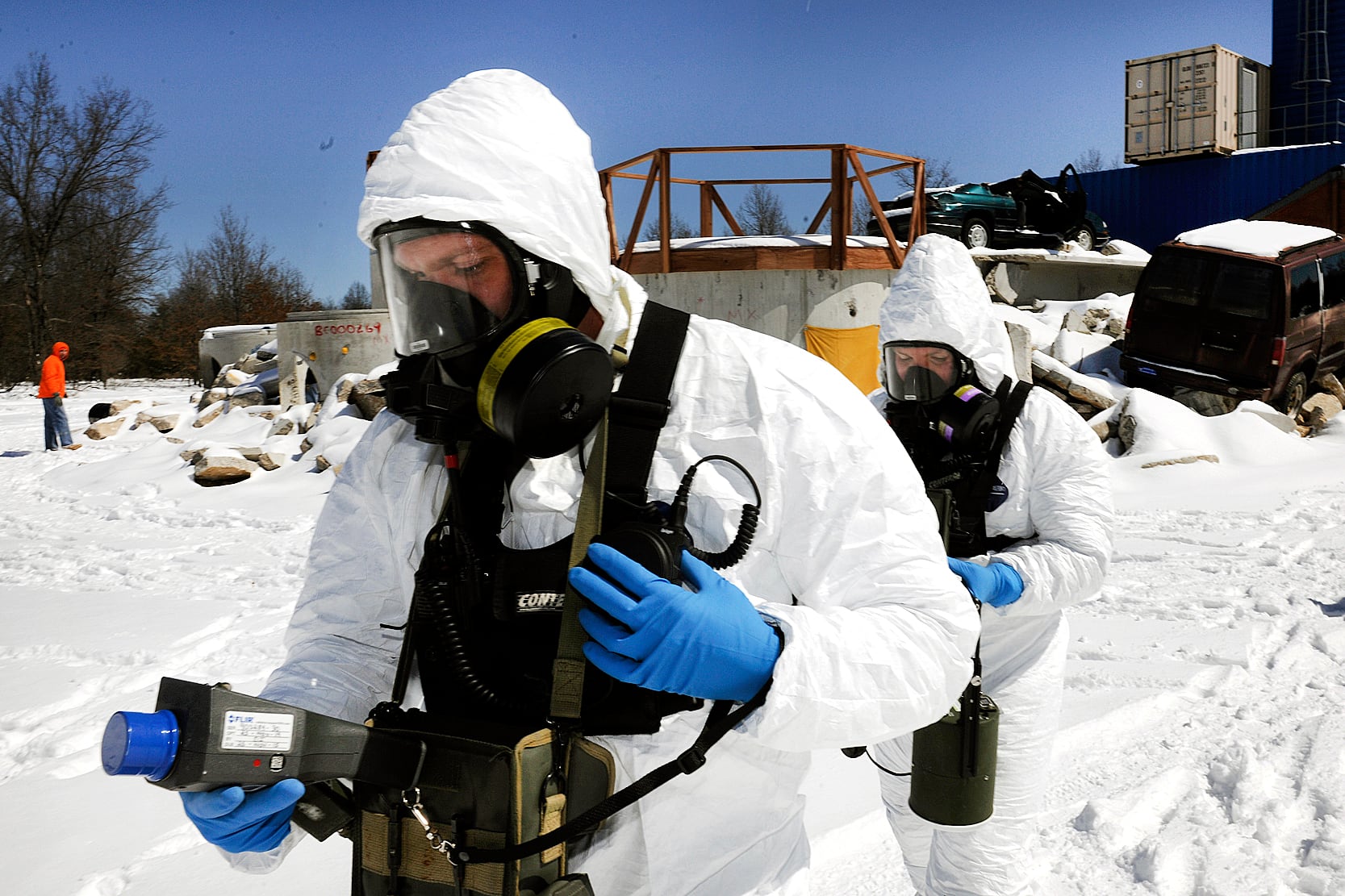With Russian President Vladimir Putin’s illegal invasion of Ukraine and escalating tensions with the Chinese government, the potential for conflict in Arctic regions is increasingly likely.
The ability to conduct military operations in cold weather conditions has never been more critical. My home state of Michigan can play a key role in ensuring the U.S. military is prepared for such a conflict for two main reasons: established premier winter training capabilities and an effective use of taxpayer dollars.
As a former Lt. Commander in the U.S. Navy Reserve and member of the Senate Armed Services Committee, I recently visited Camp Grayling located in Northern Michigan where snow, high winds, and single-digit temperatures are commonplace. While there I saw firsthand how Michigan’s National All Domain Warfighting Center, which includes Camp Grayling, is a vast, sophisticated and underused resource at the very crossroad between arctic preparedness and cost-efficiency. I believe this training center can, and should be, leveraged to help the U.S. military maintain a strategic edge against competitors such as the Chinese and Russian governments.
In 2019, the Department of Defense identified three ways to meet strategic goals: Building Arctic Awareness, Enhancing Arctic Operations and protecting the global community in the Arctic. While Congress and the Biden Administration are regularly seeking opportunities to bolster our national security, Michigan’s National All Domain Warfighting Center is a tool that can significantly improve arctic preparedness.
The DoD recognizes the importance of cold weather training, and that training can happen in Michigan. And in the 2022 national defense bill that is now law, I secured a provision highlighting the importance of cold weather training and mandating that DoD provide a report detailing existing all-domain warfighting centers that are able to support arctic like training exercises. I’ve also long been focused on ensuring taxpayer dollars are used efficiently – and training forces in Michigan is a cost-effective way to replicate arctic operations.
The U.S. Army’s Northern Warfare Training Center in Alaska, while the premier cold weather training facility for our military, is over 3,000 miles from the center of the Continental U.S., making it costly for large military formations from the lower 48 to conduct training. By contrast, Camp Grayling, Michigan is less than 1,000 miles from the center of the continental U.S. and can receive large equipment through road, rail, sea, and air. While Michigan does not experience the same extremes as Alaska, temperatures at Camp Grayling have been colder than Alaska in years past.
The National All-Domain Warfighting Center is located in the northern portion of Michigan’s Lower Peninsula and can facilitate a vast array of modern training requirements across all domains. Land-based units can stretch their footprints in the National All Domain Warfighting Center’s 148,000 acres of land and maneuver areas. Its large impact areas are ideal for integrating ground and airborne fires, including mortars, all forms of rocket and cannon artillery, and Close Air Support.
Camp Grayling also has over 17,000 square miles of restricted and special-use airspace, which is the largest area east of the Mississippi River. In addition to providing cutting-edge facilities and spaces to train for land and air-based operations, Camp Grayling offers a premier destination for Signal, Cyber, and Electronic Warfare training.
Only one percent of the range capacity at the National All Domain Warfighting Center is utilized during winter training months, which means there is potential for future use. The highly successful “Winter Strike” exercise that I observed is in its fourth year and is designed to test the Extreme Cold Weather operational readiness of the units involved. Both the Chief and Vice Chief of the National Guard Bureau traveled to Michigan to observe the exercise this year which shows how valuable the Department of Defense believes Michigan can be to meeting the cold weather security challenge.
The participants this year included National Guard units from Michigan and Wisconsin, Marines from South Carolina, and military personnel from the United States and Latvian National Armed Forces. Additionally, Winter Strike allows training on individual and collective skills such as hypothermia training and cross-country skiing.
The model demonstrated by Winter Strike can be replicated across Active and Reserve components of the Department of Defense as a cost-effective pathway toward arctic readiness. Michigan is home top-notch defense capabilities that showcase the best of what our state has to offer – the ability to strengthen our military readiness for potential conflict in arctic conditions cannot be overlooked.
Sen. Gary Peters is a lawyer, politician, and former military officer serving as the junior U.S. senator from Michigan since 2015. A member of the Democratic Party, he was the U.S. representative for Michigan’s 14th congressional district from 2013 to 2015 and Michigan’s 9th congressional district from 2009 to 2013. Before election to Congress, Peters served in the U.S. Navy Reserve, spent 22 years as an investment advisor, and worked in academia. He is Chairman of the Homeland Security and Governmental Affairs Committee and serves on the Senate Appropriations Committee, Senate Armed Services Committee and Senate Commerce, Science, and Transportation Committee.
Have an opinion?
This article is an Op-Ed and the opinions expressed are those of the author. If you would like to respond, or have an editorial of your own you would like to submit, please email C4ISRNET and Federal Times Senior Managing Editor Cary O’Reilly.









